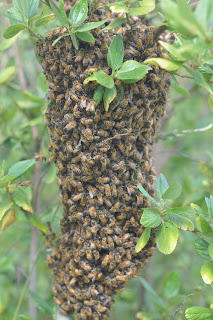As the nights get colder and the first frosts come, there is still busy activity all around the farm. A couple weeks ago, the Coyote Bush started to bloom. Coyote Bush, or Baccharis pilularis, is one of the only California native plants blooming this time of year and therefore it attracts a lot of attention and is a valuable food source for many insects. Watching for just a couple minutes, you can spot different varieties of bees, wasps, ladybugs, may flies, flies, ants and more crawling and buzzing around the plant. You can also smell the sweet honey-like fragrance of the flowers if you get up close.

Coyote Bush is a hardy plant and can survive even in very dry and nutrient poor soil. It has a large complex root system that is perfect for holding soil in place to help prevent erosion. On the farm there are many Coyote Bush plants planted along the creek bed bordering the property, in order to hold the soil. Coyote Bush can survive harsh weather conditions and even low to moderate levels of salinity, so it is often used as erosion control in nutrient poor coastal areas and is found growing there naturally as well. Coyote Bush is also considered fire retardant and is not eaten by deer. Dwarf coyote bush is more commonly grown for native gardens in California as it makes a nice ground cover or more easily controlled small shrub.

The larger coyote bushes tend to be rangier and less 'pretty.'

There are both larger coyote bushes and smaller dwarf coyote bush here on Castle Rock Farm. Both have small oval leaves that range from dark to bright green. Coyote Bush is an evergreen, so it adds color to the landscape year round. The flowers are very small and are white, cream, or yellow and can bloom from early summer through mid-winter.
I have been having fun learning more about native plants here on the farm and watching all the activity on the Coyote Bush lately. Consider planting Coyote Bush in your garden and you can see what all the buzz is about!

(Note: All pictures from here on the farm except the second photo, of the dwarf coyote bush ground cover, which was taken from the Native Sons website.)





